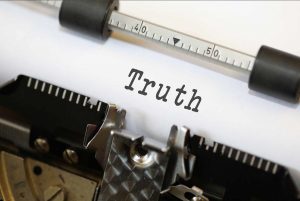
On the day that you cross the Yarden…you shall set up large stone and coat them with plaster.[2]
R. Shimon and R. Yehuda dispute the relationship between the plaster, the stone, and the message that was inscribed. R. Shimon holds that the text was inscribed on the layer of plaster, making it plainly visible. They learned from it that the Jewish mission in the Land was not one of slash-and-burn conquest, and that those who were not residents but arrived after having repented their pagan practices were welcome. R. Yehuda argues that the words were etched into the stone itself, after which they were covered by a layer of plaster. Those non-Jews who came upon the stone monuments had “binah yeseirah,” and figured out that there was a message hiding under the plaster. By scraping it away, they were able to make copies and discern the Torah’s message beneath. Having been given the opportunity to learn and ignoring it, the nations of the world effectively doomed themselves to spiritual destruction.
It is difficult to understand why, according to R. Yehuda, the Torah commanded to convey its message in such a convoluted way – inscribing the text, and then covering it over and obscuring it.
We need to look elsewhere to make sense out of this. Everything requires some connection to kedushah to survive and flourish. We understand how the connection of Jewish souls to the letters of the Torah allow for their robust existence. But what of the nations of the world? Their chiyus/vitality comes from the souls that fell as a consequence of the sins of Adam and the next generations, and that came to dwell among them.
Those souls, containing sparks of kedushah, are carried by geirim/converts. Possessing those sparks leads them to find their way back to their source. Others – who do not possess those sparks – are simply unable to respond to the Torah’s message and convert. Devoid of that kedushah, the Torah remains incompatible with what they are.
We easily see what happens when people who don’t possess some native kedushah approach Torah. They read the Torah’s message, and distort it according to their own proclivities. They use the words of the Torah to prop up the vacuous philosophical and theological systems that they invent. It is not chiefly an evil manipulation of the Torah for their own purposes. Mainly, they simply cannot see and relate to the truth because they live outside the boundaries of kedushah, and therefore invent their own truth.
The story of Chavah’s sin illustrates this nicely. According to Chazal, Chavah told the nachash that Hashem had forbidden eating from the Etz HaDaas and even touching it, on pain of death. Couldn’t be, said the nachash. Nothing to worry about. I’ll prove it to you – and pushed her so that she touched the tree, without ill effect. Chavah was completely flummoxed, and proceeded to eat from the forbidden fruit.
How did this happen? Chavah knew that Hashem had only banned eating from the tree, not touching it. How did she come to believe so intensely that He had warned that touching the tree would be fatal?
The answer is that Chavah’s explanation to the nachash took her words outside the boundaries of kedushah. They had nothing to do with Hashem’s actual words. Once outside the boundaries, they were in the province of kelipos and sheker. (This is why the Torah commands us to neither add or subtract from the Torah. Once you slip out beyond the limits of its kedushah, you are in “enemy territory, as it were. In a wasteland where falsehood and depravity can dwell. Having gone there, Chavah’s vision was completely clouded over. In that place, she could no longer see the emes of Hashem’s words.
This is R. Yehuda’s point about the plaster. The nations were given binah yeseirah. He uses yeseirah, in the sense of extra, or that which is beyond. When people will approach Torah within the limits of kedushah, they will find inspiration and riches. When they exceed then, when they go outside and beyond, they will only find distortion.
- Based on Meor Einayim, by Rav Menachem Nochum zt”l of Chernobyl. Please note: The end of the piece is missing in the original, and is completely this author’s attempt at a reconstruction of a lost original. ↑
- Devarim 27:2 ↑


